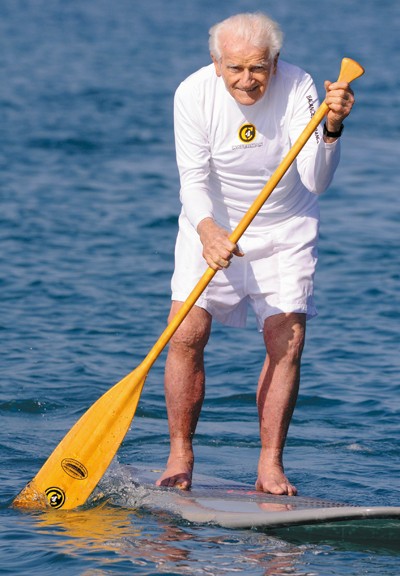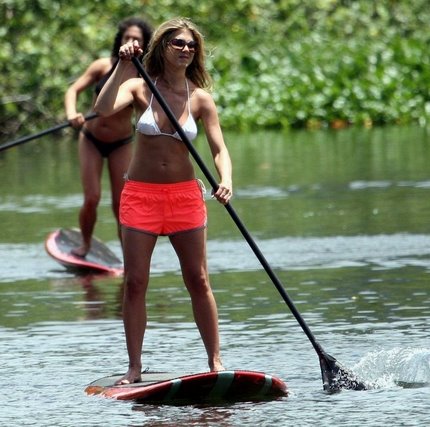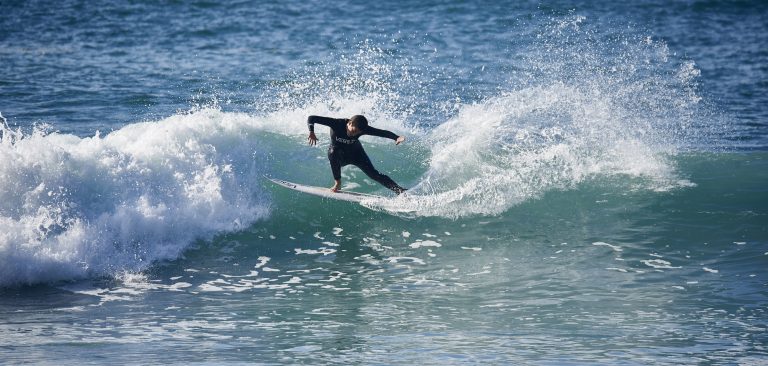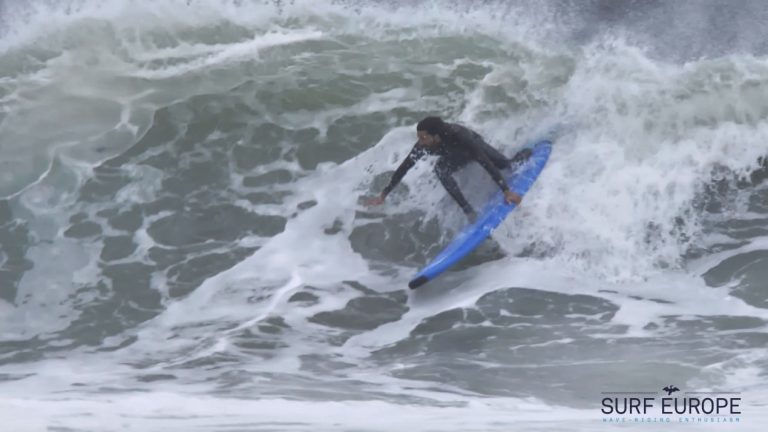It was on the weekend, when a SUP’er prone-stroked past me, straight to the inside of the rip bowl and using his superior paddling power, snaked me for the fifth time that I thought, not for the first time, where the fuck did this SUP craze come from? This guy seemed to think he was channeling the ancient kings, his upright stance and sport’s Hawaiian heritage meaning he could do what he wanted. But was this the truth? So instead of doing something smart, like pooing on the bonnet of his car, I instead turned to internet research. I found the origins of the sport and I wrote it here. It didn’t make me less angry, and it didn’t get me any more waves, but next time the fucker snakes me, I at least will have an in depth historical knowledge of his sport. That will learn him.
The sport of Stand UP Paddleboarding (SUP) had its origins in the late 1950s and early 1960s in Waikiki. It was then that the Beachboys in Waikiki, led by the likes of Duke Kahanamoku and Leroy AhChoy, started standing up on big surfboards, using long paddles to maneuver. The paddles used were from the surf canoe and kayaks that were used often on the smaller days.
Realising the stability of the long boards, the beachboys starting takings cameras into the line up to take pictures (and sell of course) of tourists. It caught on with the other beachboys, as well as the kids growing up in Waikiki and accordingly was known as Beach Boy Surfing. However by the late ’60s, with the arrival of shorter, lighter fibreglass surfboards, the sport had died out, except for a few staunch participants, like AhChoy and John “The Pearl Diver” Zapotocky, who roamed the smooth waters of Waikiki, unprone and proud.

However with only a handful of Beach Boy Surfers throughout the ‘70s and ‘80s, it could hardly even be described as a subset of surfing, let alone a sport. By the late ’90s though, the sport had a renaissance, perhaps predictably led by Hawaii’s leading big-wave surf pioneers. On Maui, guys like Laird Hamilton, Dave Kalama and Robbie Naish, legends who whilst always progressed surfing with new technology always had a firm grasp of surfing’s history, began using Beach Boy Surfing, initially for exercise, training their core & legs for tow-in surfing, and then increasingly for the pure enjoyment of the sport.
Similarly on Makaha, legendary waterman like Brian Keaulana, Bruce DeSoto & Mel Puu, along with ex pro surfer and innovator Dave Paarmenter, took to the sport, surfing everything from tiny rollers to 20 feet Makaha.
By 2000, with the sport snowballing in popularity in Hawaii, it was inevitable that word would spread. Rick Thomas, and mainland American who had grown up as a kid watching and surfing with the Waikiki beach boys is deemed to be the man who introduced SUP to California. “It was still in my brain and it was something that I always held that I really wanted to do, and after coming back in 2000 and seeing someone at Waikiki Beach Boy surfing I said, ‘That’s it, I gotta go back and get this childhood dream. And ever since its been on.”
Thomas got himself a 11ft board Muñoz board and paddle from Leleo Kinimak, a world class out rigger paddler, and hit California in 2000. The response was emphatic. “Ohhh, they were like ‘what are you doing?’ and I would just tell them it was the old way and everybody was just amazed and interested and really stoked,” Thomas has said. It was this positive response that has since been replicated all round the world with SUP recognised as the fastest growing watersports in the world.
Other watershed movements included when Brian Keaulana decided to add “Beachboy Surfing” to the world-recognized “Buffalo Big Board Contest” held in Makaha in 2004. 49 of the world’s best waterman entered the event, giving instant credibility to the sport. The same year Archie Kalepa was the first SUP to complete the Quicksilver Molokai to Oahu Paddleboard race, thus making necessary a new category in the classic race.
Of course in terms of watershed, a picture of Jennifer Aniston Stand Up paddleboarding that circulated the globe in 2007 in Hawaii only added to the mass appeal factor.

“Today almost 60 per cent of my sales are from non-surfers,” said Robbie Naish, one of the leading developers and producers of SUP boards. The SUP phenomena has gone global with increasing sales recorded in every country where surfing is active. In 2010 a World Stand Up Tour was formed, taking in events in California, Tahiti, Brazil, France and Hawaii, with Kai Lenny taking the 2011 Stand Up World Championship. The 2012 world champion was crowned after a six event world tour, the last comp held event in British Virgin Islands and won by Brazil’s Leco Salazar. Jennifer Aniston came fourth.





